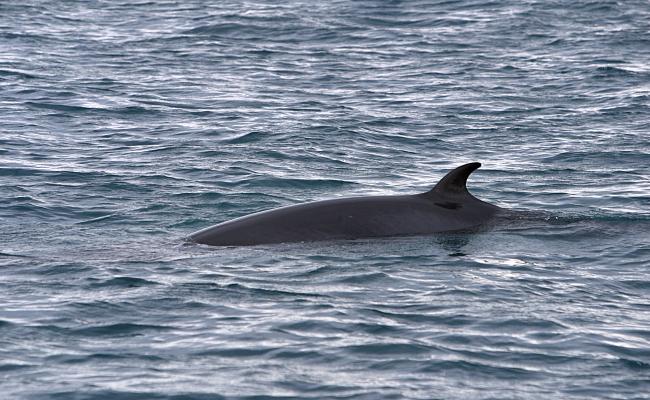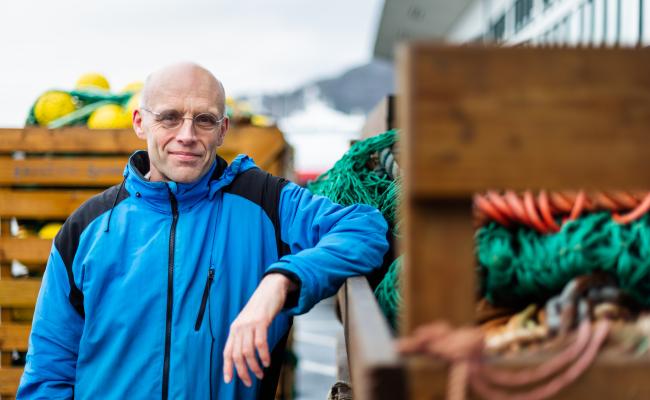Researchers Are Using Catfish to Combat Sea Urchins
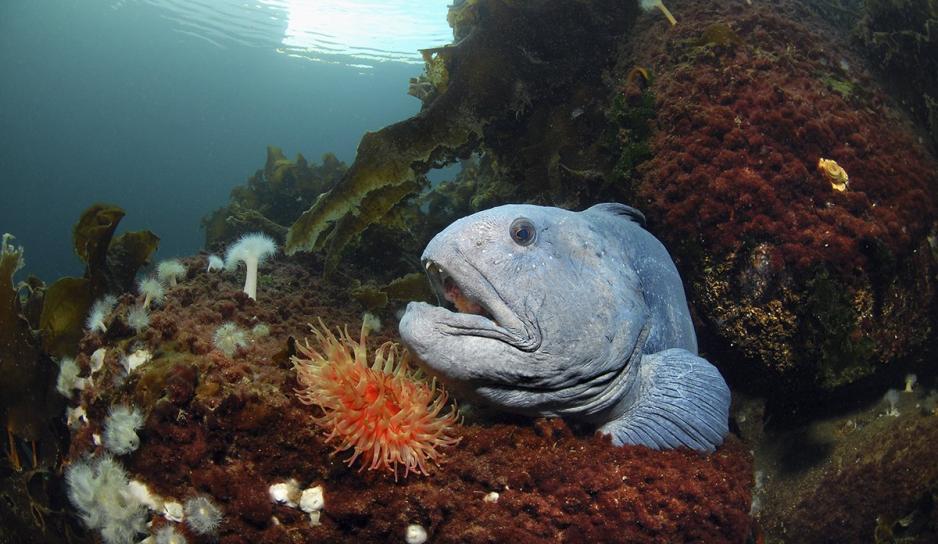
This guy could be part of the rescue team for the kelp forests along the Norwegian coast. (Photo: Erling Svensen / the Norwegian Institute of Marine Research)
In the north of Norway, researchers are now transferring catfish in an attempt to combat the sea urchin and its overgrazing of the kelp forests along the Norwegian coast. Overfishing of the sea urchins' natural predators, such as the catfish, has led to the sea urchins consuming almost 5000 km2 of kelp forests since the 1970s.
It's described as one of Europe's biggest ecosystem crises: the sea urchin.
Due to a previous overfishing of the sea urchin's natural predators, such as catfish, cod and haddock, the sea urchin has multiplied at a rapid pace. At the same time, it has grazed down the kelp forests from the coast north of Trøndelag and up to Kirkenes.
But because it takes place underwater, the sea urchins' overgrazing has been a 'silent catastrophe'.
"Researchers have warned against this crisis for a long time," said Frederic Hauge, the founder of the Bellona Foundation, to High North News last year during the opening of the Center for Marine Restoration in Kabelvåg, Northern Norway. The center works to restore the kelp forests along the Northern Norwegian coast.
The value of kelp forests
Kelp forests have a number of important functions. It serves as a home, spawning and hunting ground for many fish species. It also contributes to the absorption and storage of carbon, as well as sound absorption in areas with more noise due to increased shipping, for example.
Bellona estimates that around 50,000 tons of large fish are lost annually as a result of the sea urchin invasion, as kelp forests are a favorite breeding ground for fish fry. This especially applies to coastal stocks, and in several coastal communities, sea urchins are blamed for cod disappearing from the fjords.
Hauge said last year that the estimated annual loss of value for the regions of Nordland, Troms and Finnmark is NOK 350 billion and that the restoration of Norwegian kelp forests has the potential to provide great value in the form of 50,000 tons of large fish and 1.2 million tons of long-term storage of CO2 per year.
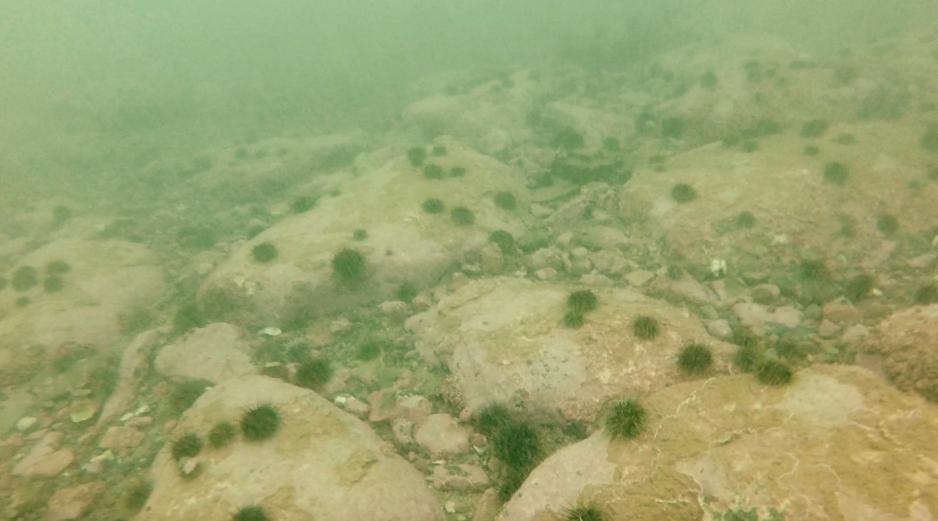
Sea urchins on the Norwegian seabed, showing the desert-like conditions they leave behind.(Photo: Mareano / the Norwegian Institute of Marine Research)
Moving project
Ocean researchers are now working on a solution.
Previously, it has proved efficient to use lime in addition to divers removing sea urchins manually. However, that is time-consuming and costly at a larger scale. Researchers are also uncertain when it comes to the long-term effects of these measures.
Now, they are placing catfish in artificial kelp forests in Melkøy Sound in Northern Norway to see if reintroducing the sea urchin predators will help. The artificial kelp forests were placed in the sound last year.
The kelp forest units used in the Melkøy Sound are created for mass production and simple placement, and could potentially be used to establish biological "hotspots" in other grazed-down fjords, writes the Norwegian Institute for Marine Research.
"The artificially created kelp forests are meant as a starting aid. They will produce kelp spores, which can help seed new areas of kelp, and also offer nursery habitats for the young sea urchin predators, like the catfish. Perhaps larger catfish will also enjoy staying close to such areas," says ocean researcher Hans Kristian Strand to High North News.
20 catfish have therefore been captured and transported to their new home in the Melkøy Sound to see how they like it. They have been equipped with acoustic senders and a network of ten listening buoys to register where the fish is moving.
The data will be used to see whether the catfish stay and whether they make use of the new kelp forest.
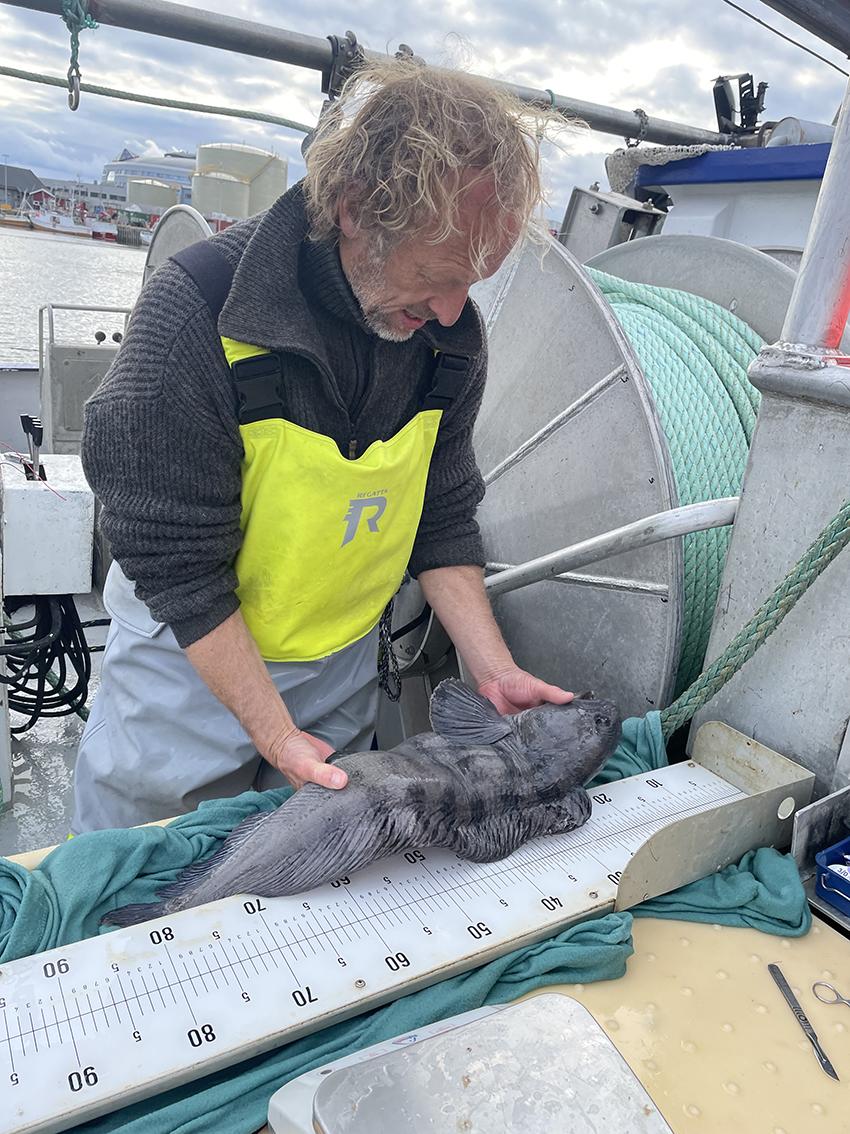
Ocean researcher Espen Moland Olsen is measuring one of the catfish that have been marked and placed in the kelp forest in the Melkøy Sound. (Photo: Hans Kristian Strand / the Norwegian Institute of Marine Research)
Catfish behavior
The ocean researcher says they hope the catfish stock will grow further.
"By transferring catfish from areas further out from the coast, where there are relatively good occurrences, to fjord and coastal areas where it has almost disappeared, we hope that new reproducing catfish pairs will be established and the population can continue to grow," he tells High North News.
Because catfish reach sexual maturity late and produce few offspring, they are vulnerable to overfishing. Once they are gone from an area, it will take a long time before they can increase their numbers again through natural processes, he explains.
Is it common for catfish to have a permanent home? How large an area can one imagine that the 20 catfish ‘patrol’?
"We don’t know everything about the catfish’s movement patterns, but they are relatively endemic, even though they migrate between shallow and deeper areas throughout the year. In spring and summer, they typically stay shallower than in winter," the researcher answers and continues:
"We want to first study whether the principle of catfish transfer can have any effect, and in the next round, we will come back to how large the population should be to be able to contribute meaningfully to controlling the sea urchin population."
He adds that it is likely that a healthy population of gray catfish should be part of a balanced kelp ecosystem in the future. There, sea urchins should also have their place, but not in such unnaturally large numbers as now.


